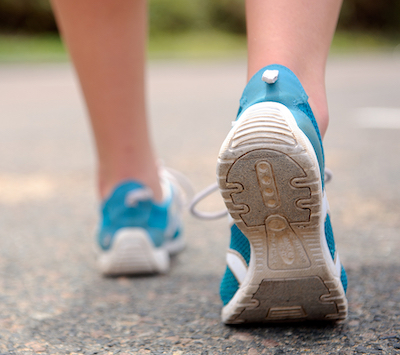A Deep Dive Into Why Your Mood Seems Contagious (and What to Do About It)
We’ve all had those split-screen days. One day you glide through the world and people are unusually warm – barista remembers your name, the neighbor lingers to chat, even the dog walkers nod like you’re an honorary member of the pack. Another day, same streets, same routines, but suddenly the air feels colder. Hellos die on your lips, people avert their eyes, conversations sputter. You didn’t snap at anyone. You weren’t rude. If anything, you kept to yourself. So why does it feel like you’re broadcasting a storm signal?
You’re not crazy. You’re picking up on something real – subtle, ordinary, and profoundly human. Call it vibe, energy, tone, or simply how you show up. It’s the invisible atmosphere you bring into rooms and relationships. This article unpacks what’s actually going on – psychologically, physiologically, and socially – and how to shift it without faking sunshine or turning yourself into a motivational speaker. The goal isn’t performance; it’s alignment: a way of being that others experience as grounded, open, and safe.
Let’s dig in.
Part 1: What “Vibes” Are (in Plain English)
“Vibe” isn’t a mystical field. It’s the sum of a thousand micro-signals you give off – most of them unconscious – plus the meanings other people place on those signals. Think of it as three layers working together:
- Your internal state. Mood, stress level, arousal (amped vs. sluggish), thoughts, and your body’s physiology (breathing rate, heart rate variability, muscle tension).
- Your outward signals. Posture, gait, facial tone, eye activity, gestures, vocal prosody (pitch, rhythm, speed), pace of movement, micro-expressions, and how you use space and timing in conversation.
- Other people’s interpretations. Humans are prediction machines. We read those signals; we make quick judgments about safety, warmth, status, and intention; then we subtly adjust our behavior.
Put these layers together and you get a feedback loop: internal state → outward signals → others’ responses → your interpretation of their responses → your internal state. It runs fast – milliseconds to seconds – and it’s happening all the time whether you’re “trying” or not.
Part 2: The Science-ish Behind It (Without the Jargon Hangover)
You don’t need a lab coat to understand the big ideas:
1) Emotional Contagion (the “yawns are contagious” of feelings)
Humans automatically mimic expressions and vocal tones of people around us. That mimicry slightly changes our own emotional state. It’s fast, unintentional, and useful for social coordination. When you’re buoyant, people around you pick up little lifts – micro-smiles, brighter tone – and mirror them back. When you’re flat or tense, they mirror that too.
2) Affective Presence (the feeling you reliably leave in people)
Some folks consistently make others feel at ease; others leave people keyed-up or insecure – even across different situations. This is called affective presence. It’s not about being a clown or a cheerleader. It’s about the vibe people experience around you, shaped by your default emotional posture (open vs. defended, curious vs. judgmental, calm vs. agitated).
3) Thin-Slice Judgments (snap reads in seconds)
People form surprisingly durable impressions in the first few seconds: relaxed shoulders read as approachable, clipped delivery reads as impatient, minimal eye contact reads as disinterest (or anxiety). First micro-signals tend to anchor expectations for the rest of the interaction.
4) Self-Fulfilling Prophecies (expectations that script reality)
If you expect to be brushed off, you’ll behave more cautiously – less eye contact, shorter answers, tighter posture. Others read that as disinterest and keep it short, which confirms your expectation. The loop tightens until “See? People are cold” feels like a fact.
5) Negativity Bias (threat signals are louder)
Our brains are wired to prioritize possible threats. Neutral faces can be misread as negative when we’re stressed or sad. On “bad-vibe” days, you don’t just send cooler signals – you perceive others as cooler even when they’re neutral.
6) Body-State to Feeling (the elevator of physiology)
Your nervous system doesn’t wait for your mind to decide how to feel. Short, shallow breaths, clenched jaw, and a rigid spine tell your brain, “We’re under pressure.” Your expression subtly tightens; your voice sharpens; your pacing quickens. Others feel that and brace – then you feel them bracing and think, “Ugh, people are off today.” Loop complete.
Part 3: “But I’m Not Being Mean – Why Do People Still Pull Back?”
Because most of the transmission happens through unintentional channels:
- Facial tone. Not frowning, but flat – little movement around the eyes and mouth. Reads as distant.
- Eye behavior. Looking down and away for too long can feel like disengagement; darting eyes can feel anxious or evasive.
- Posture. Collapsed chest or rounded shoulders reads as withdrawn. Rigid spine and chin thrust can read as defensive.
- Micro-pauses. Delayed response times (a beat too long) telegraph hesitation or disinterest.
- Vocal prosody. Monotone, low volume, or clipped cadence can sound cold even when your words are polite.
- Spatial behavior. Standing too far back or angling your body away suggests “I’m not here for this.”
You’re not hostile – you’re closed. People sense “not safe to connect” and keep it transactional.
Part 4: The Subtle Signals People Actually Notice
Let’s get granular. Imagine a 30-second coffee shop interaction:
- Entry gait: Are your steps gliding/grounded or hurried/jerky?
- Arrival posture: Do you stop with your weight balanced and chest soft, or are you tilted, arms crossed, shoulders high?
- Face at rest: Is there a hint of warmth around the eyes, or are you expressionless?
- Voice on the first word: “Hey” with air and a slight up-tone vs. “Hey” flat, low, and abrupt.
- Timing: Do you allow a half-beat for the barista’s response or stack your words with no space?
- Micro repair: If there’s a stumble – card doesn’t tap, you fumble change – do you exhale and smile (“my bad”), or do you stiffen and go silent?
- Exit glance: A quick appreciative nod vs. no acknowledgment.
This is the layer where “vibe” lives. Small inputs, big outputs.
Part 5: How to Shift Your Vibe Without Faking It
Good news: you don’t need to become an extravert, force laughter, or keep a grin stapled on. The aim is coherent warmth: calm, present, and gently open.
Step 1: Regulate your body first (fastest win)
- Breathe lower, not bigger. Inhale through the nose to a slow count of ~4, exhale to ~6–8. Longer exhales cue your “rest and digest” system.
- Unclench. Jaw, glutes, abs, toes. Softening these drops overall tension.
- Stack your posture. Imagine your sternum floating up 1 cm, shoulders hanging heavy. Not military; more “balanced and available.”
- Blink rate & gaze. A normal blink rate and soft focus (not staring) communicates ease.
Do this for 60–90 seconds before social moments (walking into a store, joining a Zoom, entering the office). It changes the channel your body is broadcasting.
Step 2: Prime your brain (set the frame)
- Two-word intention. Pick warm & clear, calm & curious, or light & helpful before you interact. Keep it in mind like a song title.
- Micro-gratitude scan. Name three tiny, concrete good things: “hot coffee, comfy shoes, morning sun.” This nudges your perception map toward possibility.
- Upgrade your self-talk. Swap “No one wants to talk to me” for “I don’t need everyone; I can connect with one person for 20 seconds.” The second line is actionable and doesn’t demand charisma.
Step 3: Tune your nonverbals (low effort, high yield)
- Mouth corners and eye warmth. Not a grin – just a hint of upward tone and slight crinkles near the eyes when you greet.
- Tempo. Speak 5–10% slower than your stressed default. Add micro-pauses at commas. Speed reads as pressure; pressure makes people brace.
- Volume. Aim for “library plus one.” Too low reads as fear; too high reads as pushy.
- Openness gestures. Palms occasionally visible, arms uncrossed, torso angled toward the person 10–15°.
- Micro-acknowledgments. “Gotcha,” “thanks,” nods. These are social WD-40.
Step 4: Use “low-risk bids” for connection
A bid is any small attempt to engage. Make them light, specific, and easy to accept.
- Observational bid: “That espresso smells amazing today.”
- Help bid: “Want me to hold the door?”
- Name + thanks: “Thanks, Maya – I appreciate it.” (If wearing a name tag.)
- Preference share: “I always debate the blueberry vs. chocolate chip.”
These don’t demand a conversation. They open the door without crowding anyone.
Step 5: Repair on the fly (when the vibe stutters)
If something feels off, narrate it kindly.
- “I realize I came in a little rushed – morning chaos. Hi, I’m Steve.”
- “I’m distracted by my phone – mind if I put this away so I can actually listen?”
- “I sounded short there. Let me try that again.”
Repairs restore safety fast and often deepen rapport.
Part 6: What If You’re Just Having a Rough Day?
You’re allowed to be human. On low-battery days, aim for neutral and kind, not “sparkly.”
- Shrink the ambition. Replace small talk with clean, appreciative interactions.
- “Morning, thanks so much.” (Eye contact + nod.)
- Signal availability without chat. A brief smile, open posture, and a simple “have a good one” beats trudging silently.
- Set expectations with people who matter.
- “Quick heads-up: I’m low today. Not upset with you – just quiet.”
Paradoxically, owning your state reduces the negative signal it sends.
Part 7: The Four Common “Bad-Vibe” Patterns – and Fixes
Pattern A: The Invisible Wall
- Looks like: Tight face, minimal eye contact, clipped replies.
- Feels like (to others): “They don’t want me here.”
- Try: 2-second check-ins. When someone speaks, hold eye contact for two seconds, then nod and paraphrase one word: “Deadlines?” This signals “seen.”
Pattern B: The Over-Correct (trying too hard)
- Looks like: Forced laughs, rapid-fire stories, big gestures that don’t match the room.
- Feels like: Pressure; people lean away.
- Try: Match-then-lead. First mirror the other person’s tempo and volume; once you’re in sync, you can gradually warm things up.
Pattern C: The Ghosted Hello
- Looks like: You greet someone; they barely respond.
- Feels like: Rejection. Your body drops; you shut down.
- Try: Don’t personalize the first hit. People miss bids all the time (noise, distraction, their own stress). Give it one gracious re-bid later: “Hey again – how’d that meeting go?” If they still don’t engage, let it go. It’s about them.
Pattern D: The Silent Spiral (you feel off, they feel off, it loops)
- Looks like: Brief, awkward exchanges; you withdraw further.
- Try: Reset with body cues. Step aside, take two slow breaths, lower your shoulders, then re-enter with a tiny bid: “Appreciate your help on that.”
Part 8: Upgrading Your Affective Presence (Longer-Term)
Shifts stick when your baseline changes, not just your tactics. Think of the next four practices as vibe weight-training:
1) Build micro-confidence reps
Confidence is often context-specific. Pick one domain (e.g., café orders, hallway greetings, short check-ins with coworkers). Do 1–2 reps per day for 21 days. Track it. Success compounds.
2) Sleep and sunlight (the unsexy superpowers)
Sleep deprivation and dim mornings flatten affect and sharpen irritability. Get morning daylight for 5–10 minutes and protect your sleep window. Your social battery will thank you.
3) Train your breath offstage
Use a 6 breaths/minute practice (inhale ~4–5 seconds, exhale ~5–6) for 5 minutes a day. It increases heart-rate variability – a marker of flexible calm that makes warm presence easier to access when you need it.
4) Expand your emotional vocabulary
When you can name your internal weather more precisely (“restless,” “overwound,” “flat,” “raw”), it’s easier to adjust. Try the simple formula: Name it → Normalize it → Next step.
- Name: “I’m keyed-up.”
- Normalize: “Makes sense after that email.”
- Next: “Two long exhales, then I’ll go say hi.”
Part 9: Scripts That Don’t Sound Scripted
Use these as training wheels. Modify to your voice.
Entering a room/Zoom
- “Morning! I’m a bit slow-brain until coffee – how’s everyone doing?”
- “Hey folks – good to see you.”
Hallway or quick pass-by
- “Hey, Jordan. How’s your week treating you?”
- “Love that mug.”
When you need to redirect your tone
- “I heard myself get curt just then. Sorry about that – my bad.”
When you want to connect but feel awkward
- “I’m trying to be less of a head-down gremlin this week, so – hi.”
When someone seems closed
- “No worries if now’s not a good time. I can catch you later.”
These phrases carry warmth and self-awareness without being overbearing.
Part 10: A 7-Day Vibe Reset (Quick Program)
Day 1 – Awareness Audit
- Three times today, pause for 30 seconds and note: posture, breath, facial tone, speed. No fixing yet – just noticing.
Day 2 – Physiology First
- Before three interactions, do 5 slow breaths with longer exhales. Unclench jaw, soften shoulders.
Day 3 – Tiny Bids
- Make three low-risk bids (one-liner observation or thanks) with strangers or acquaintances.
Day 4 – Tempo & Space
- Speak 10% slower than your default in one meeting or conversation. Leave micro-pauses after questions.
Day 5 – Repair Reps
- Catch yourself once when you’re abrupt or flat. Name it and soften: “Let me say that better.”
Day 6 – Name + Appreciate
- Use someone’s name twice today and pair it with a specific thanks: “Appreciate you catching that, Priya.”
Day 7 – Reflect & Lock
- Journal for five minutes: What felt easier? Where did people lean in more? Pick one habit to keep daily for the next two weeks.
Part 11: Pitfalls to Avoid
- Performing positivity. People feel pushy cheerfulness as a demand. Aim for calm, present, kind.
- Waiting for others to go first. When everyone waits, everyone freezes. Be the one to make a tiny bid.
- Over-analyzing every reaction. Read the overall pattern of a day or week, not a single shrug.
- Assuming it’s all you. Other people carry their own storms. Your job is to show up in a way that invitesconnection, not guarantees it.
Part 12: The Quiet Gold Standard – Psychological Safety
In the end, “good vibes” are less about fireworks and more about safety. Do people feel safe to be themselves around you? Safety is communicated through:
- Predictability: You’re steady; your mood doesn’t swing wildly.
- Attunement: You notice and respond to cues without bulldozing.
- Respect: You give people room to speak and be seen.
- Repair: When you misstep, you own it and mend.
If you can deliver those four, your vibe will land as warm – even on your quieter days.
Part 13: When the Bad Vibe Is Chronic
If most days feel heavy and connection is consistently hard, consider a deeper reset:
- Stress inventory. What three recurring stressors are spiking your nervous system? Which one can you reduce by 10% this week?
- Body care. Movement, sleep, nutrition – baseline stuff that sets your social state.
- Mind care. If rumination is loud or mood is persistently low, a few sessions with a counselor can reset your inner climate faster than you think.
- Environment design. Curate moments that feed you: morning light, a short walk, a hobby that engages your hands. These aren’t luxuries – they’re message senders to your system: “We’re ok.”
Part 14: A Final Reframe – You Don’t Need to Be Loved by Everyone
Trying to engineer universal approval is a recipe for brittle vibes. Ironically, the warmer presence comes from dropping the project of impressing people and focusing on offering something small and real: attention, steadiness, courtesy, a bit of lightness. That’s enough.
On your best days, you’ll feel it – a shared looseness, easy eye contact, a touch more conversation in the air. On your not-best days, you can still show up in ways that keep doors open rather than closing them. That’s the work. Not sparkle. Signal safety.
Quick Reference: Vibe Shift Cheat Sheet
Before you enter
- Two words: calm & curious
- Two long exhales
- Unclench jaw, drop shoulders, soften eyes
During
- Warm micro-smile on greeting
- Speak 5–10% slower, “library plus one” volume
- One tiny bid (observation, help, thanks)
- Nod + brief paraphrase (“Deadlines, got it”)
If you wobble
- “Let me try that again.”
- “I came in a bit rushed – sorry.”
On low-battery days
- Keep it clean and kind: name + thanks + nod
The Takeaway
Yes – what you’re sensing is real. We broadcast our inner weather, and people adjust to it. But this isn’t fate; it’s a dance you can lead with simple, honest moves. Tune your body first, prime your mind second, and let small, consistent signals do the heavy lifting. You don’t have to be dazzling. Just be available. The world, surprisingly often, will meet you there.














